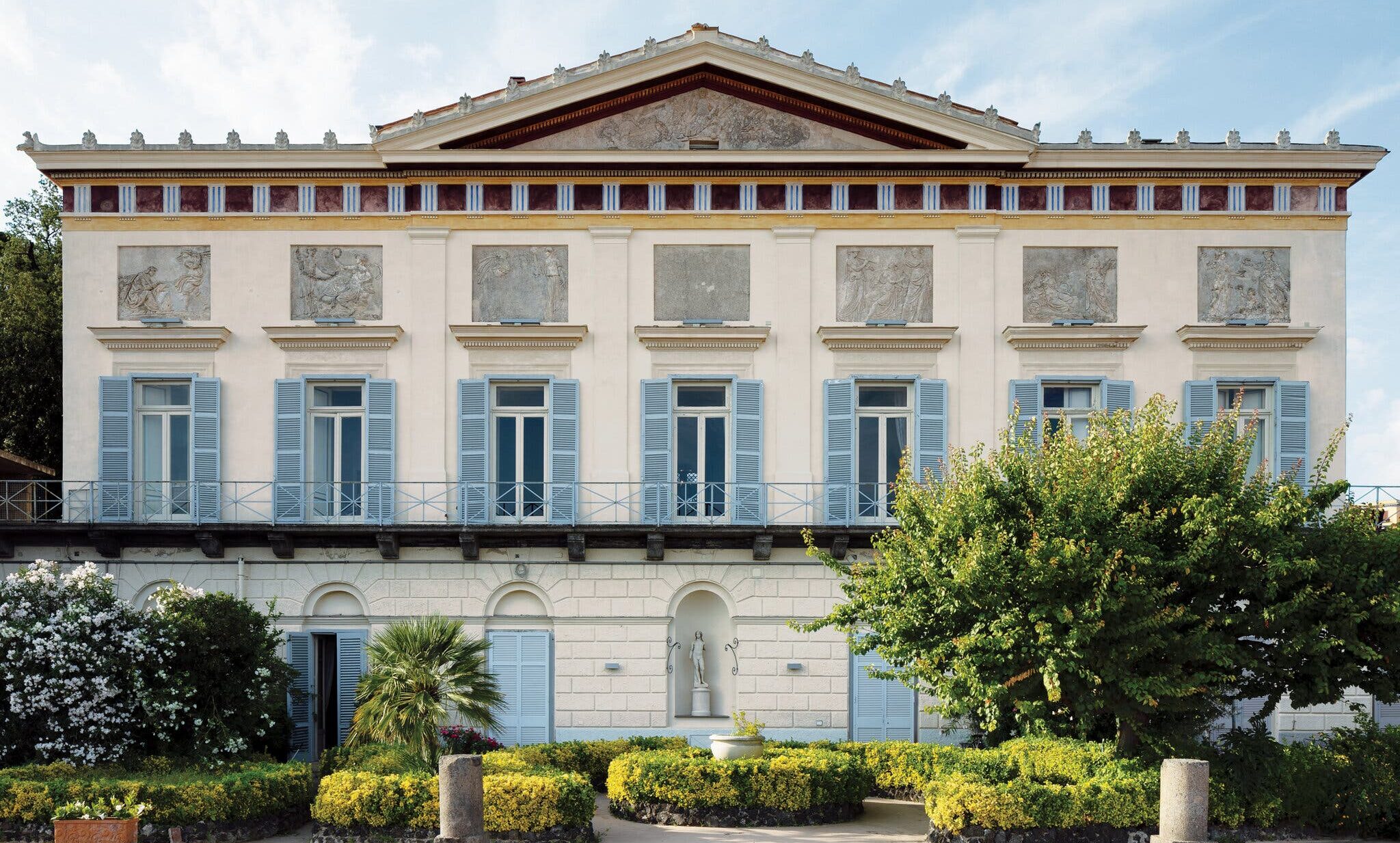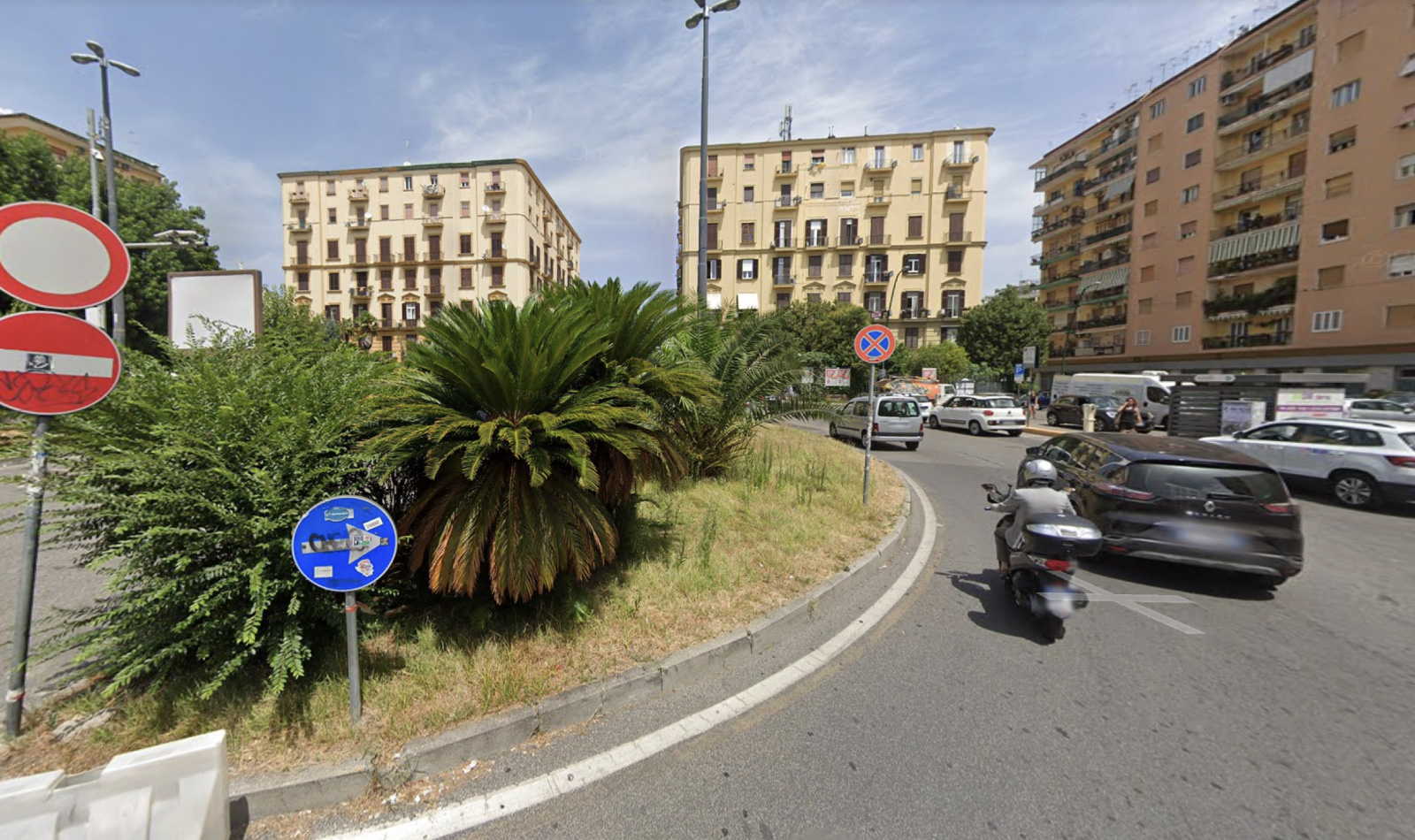Il New York Times returns to talk about Naples, this time in an in-depth article in his magazine with a nice piece dedicated to one historic building of our city which is located next to the Villa Floridiana and which the magazine defines as a large, truly lush and peaceful 25-acre private park which is even compared to a enchanted forest.
We are talking about Villa Lucia, a home indeed lavish built in the Bourbon period and built by King Ferdinand I, King of the Kingdom of the Two Sicilies, as a private residence for himself and for himself wife Lucia Migliaccio, the Duchess of Floridia.
It is a beautiful building and probably not known to all, located on the Vomero hill next to the Villa Floridiana. Today it can be reached from a driveway from via Cimarosa along the upper station of the Chiaia funicular.
It is currently owned by the Marzotto family, and it has been for about a century, after first passing through several owners.
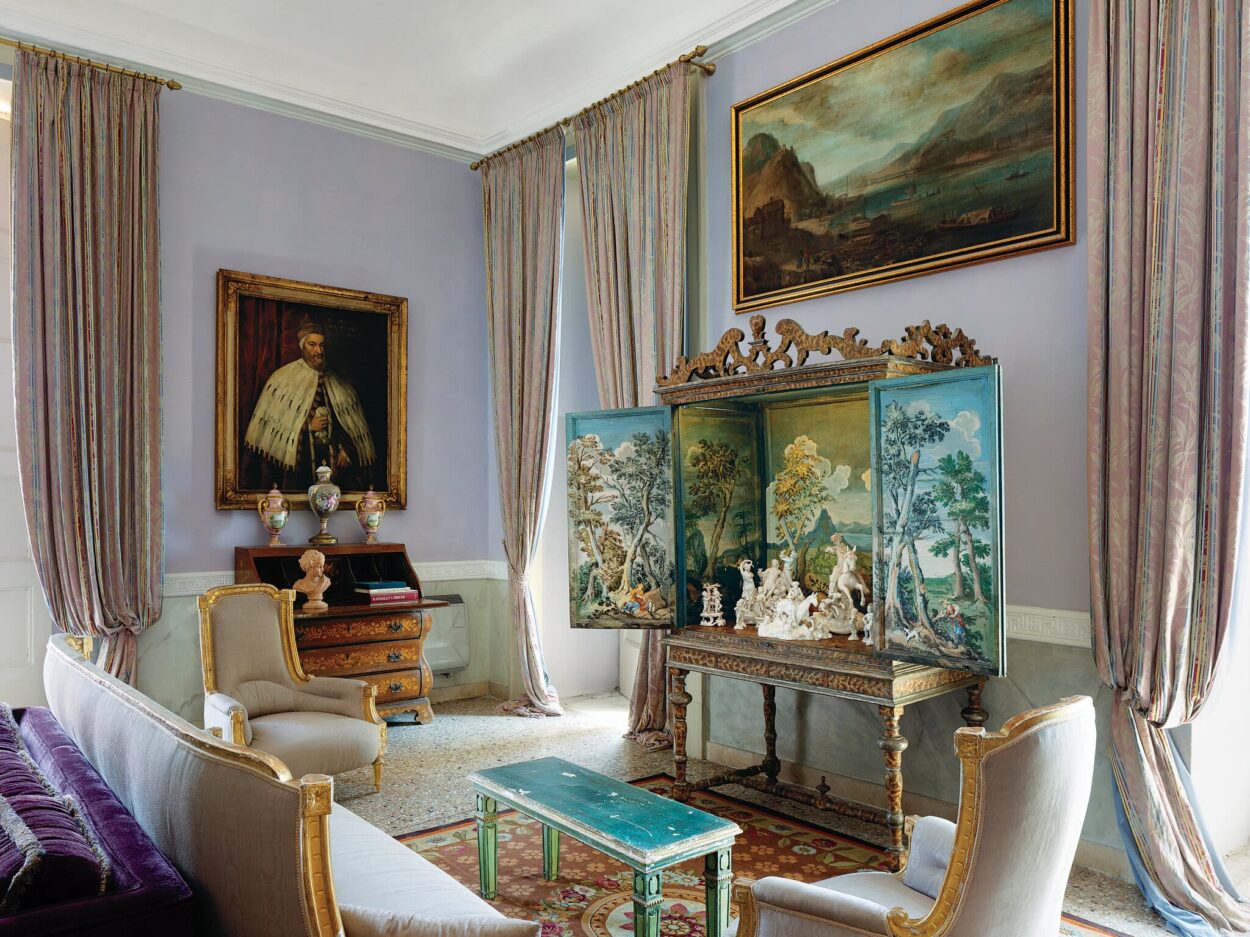
The sumptuous Villa Lucia: an incredibly charming building
As mentioned, it is surrounded by a large green park, almost a wood, which for the most part looks wild and is full of holm oaks, palms and acanthus. In the center there is a beautiful one neoclassical fountain in marble sculpted in the early 1800s with two winged figures representing Hymen and Eros. They are, respectively, the Greek deities of marriage ceremonies and carnal desire.
As mentioned, it was commissioned by King Ferdinand I and was built by the architect Antonio Niccolini as a place where the couple could take refuge to love and have fun.
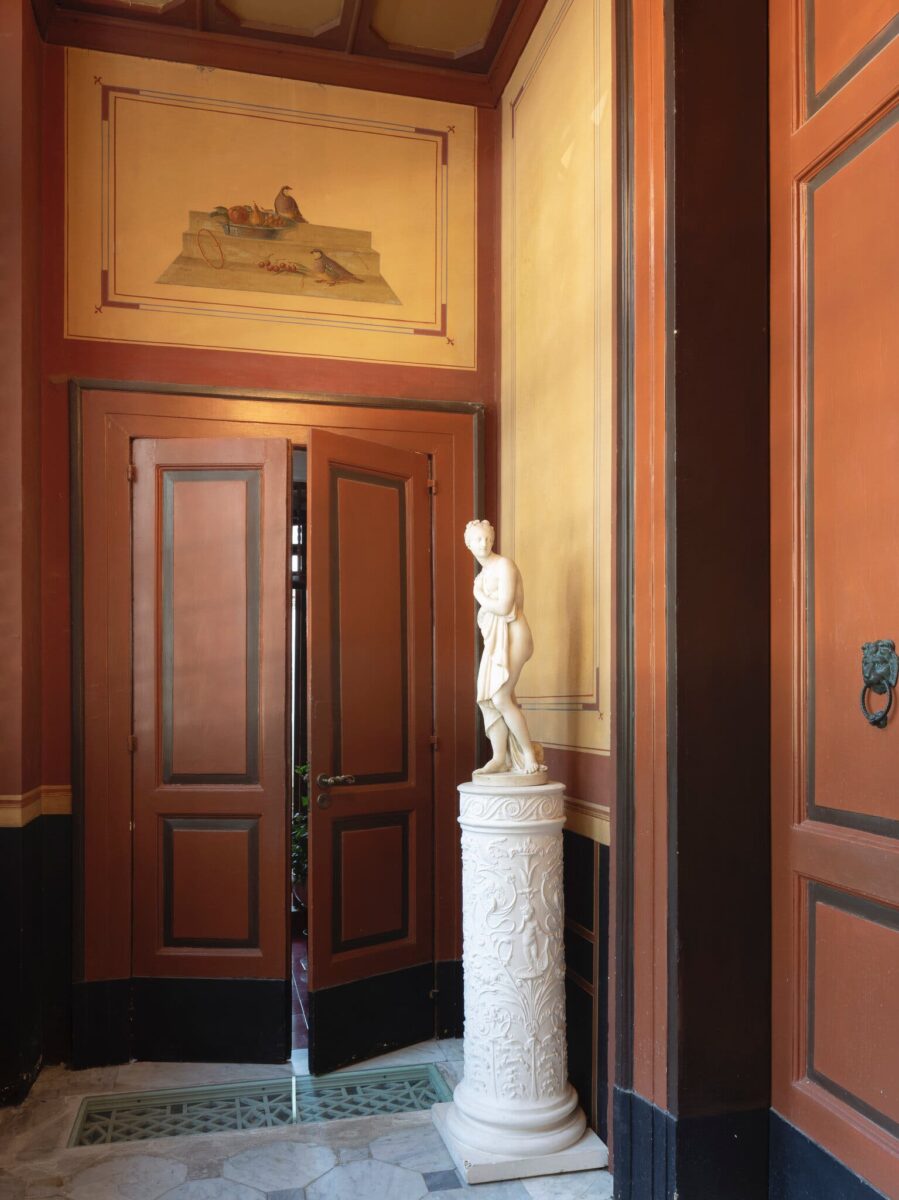
Its two facades are very different from each other:
- that northern recalls a Doric temple preserved in the excavations of Pompeii with 5 very high columns and otherworldly frescoes depicting angels, cherubs, birds and various mythological figures such as the hippocampus with the upper part of the body as a stallion and the lower one as a fish;
- the facade southern, on the other hand, it is more sober with a series of stone reliefs made above seven French doors flanking a narrow upper balcony. The color is a pale yellow. There is also a larger terrace with thick hedges and oleander trees.
Of course the panorama enjoyed from this splendid villa is incredible: you can admire the port, the Gulf, the Maschio Angioino, the imposing Vesuvius and the island of Ischia.
The splendid interiors of the Villa
The upper level consists of two huge halls decorated with Persian carpets worn, XNUMXth and XNUMXth century furniture, a Murano glass chandelier and portraits of European monarchs on the walls.
Are also present porcelain figures, cherubs playing the flute, women pouring wine, all made with the precious Capodimonte ceramics.
Two long sofas, placed one in front of the other, they are covered in precious blue percale and near a window there is a mahogany grand piano that was made for King Ferdinand.
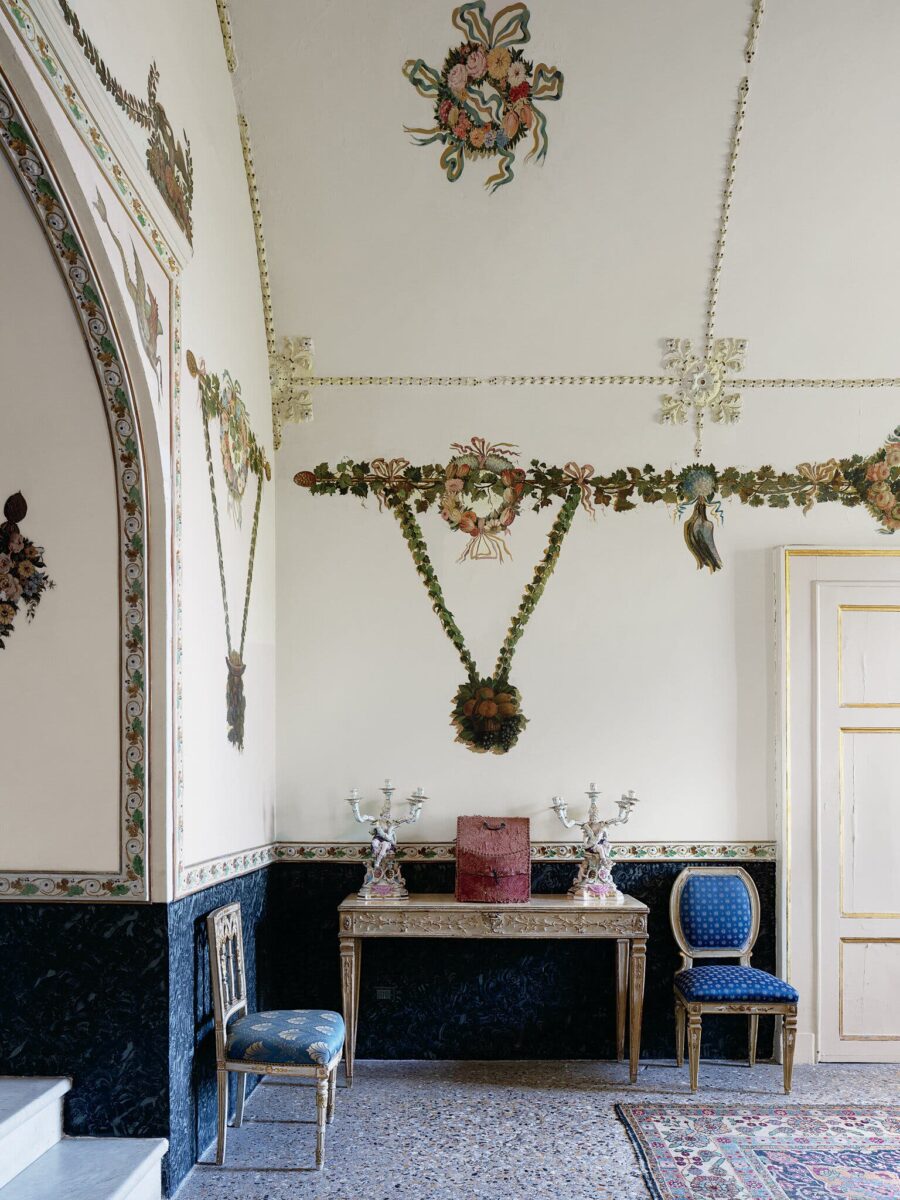
On the other hand, the ground floor, connected to the upper floor by a marble staircase, is more informal. There are:
- a bedroom with two canopy beds from the Napoleonic era and a bust of Seneca by Gemito;
- two other smaller bedrooms with libraries;
- a dining room painted with neoclassical murals;
- a relatively small kitchen;
- a room used by the servants.
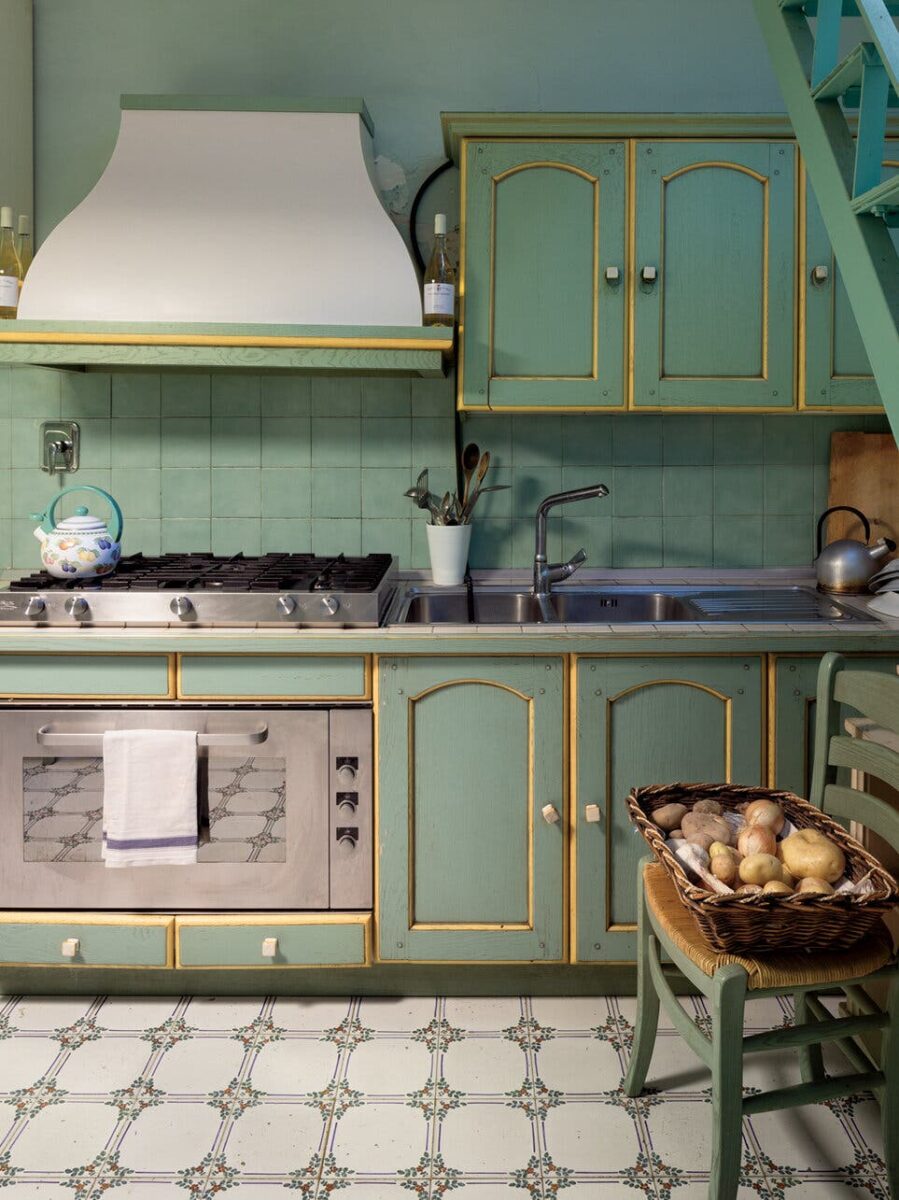
La Marzotto family, the current owners, live the two large halls on the upper floor as places to host their guests or where relax to read and work.
The current owners, the Marzottos, and their jewels
Margaret Marzotto e Merlchior d'Ollone they are the two current owners of the Villa and in recent years this house has been used by them as a laboratory for the making their jewels.
The two, in fact, in 2016 founded a company that produces fine jewelry and Villa Lucia is among their bases, in addition to Hong Kong and Paris. Their jewels are born frominspiration that not only ours beautiful Naples, but this too wonderful Villa, gives them.
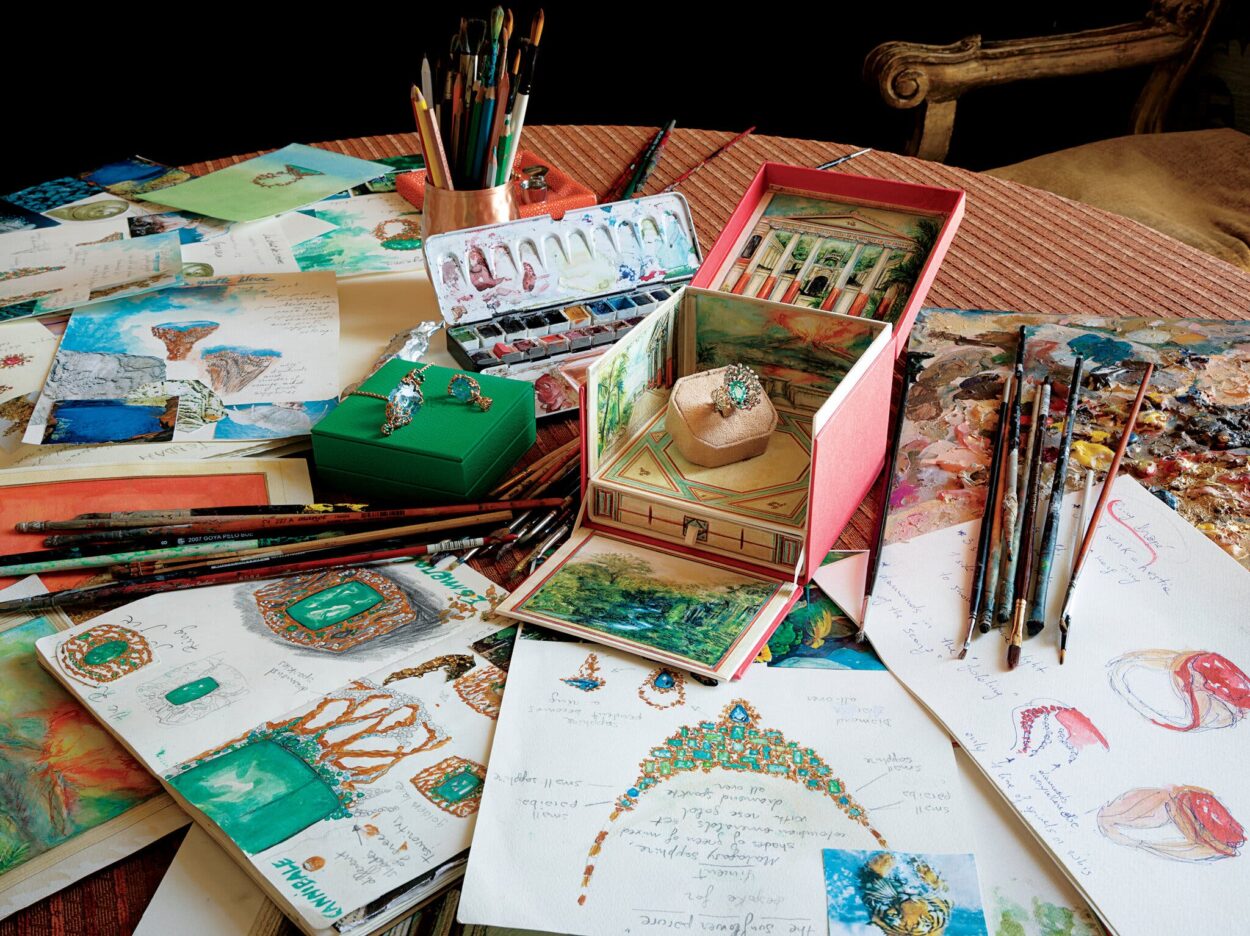
In fact, sitting on one of the terraces and admiring the fantastic panorama, one cannot fail to be captivated and imagine incredible jewels.
It must be said, however, that today the two spouses do not live the villa entirely and daily, as mentioned, but mainly linger on the terraces to create their precious jewels or to have meals. based on traditional Campania products such as courgette flowers and Nerano pasta.
In fact, as said by Merlchior d'Ollone:
True luxury is not an expensive dinner at the restaurant. It is the contrast of a wild garden growing in the center of a busy city or enjoying the simplest food while looking at this panorama.
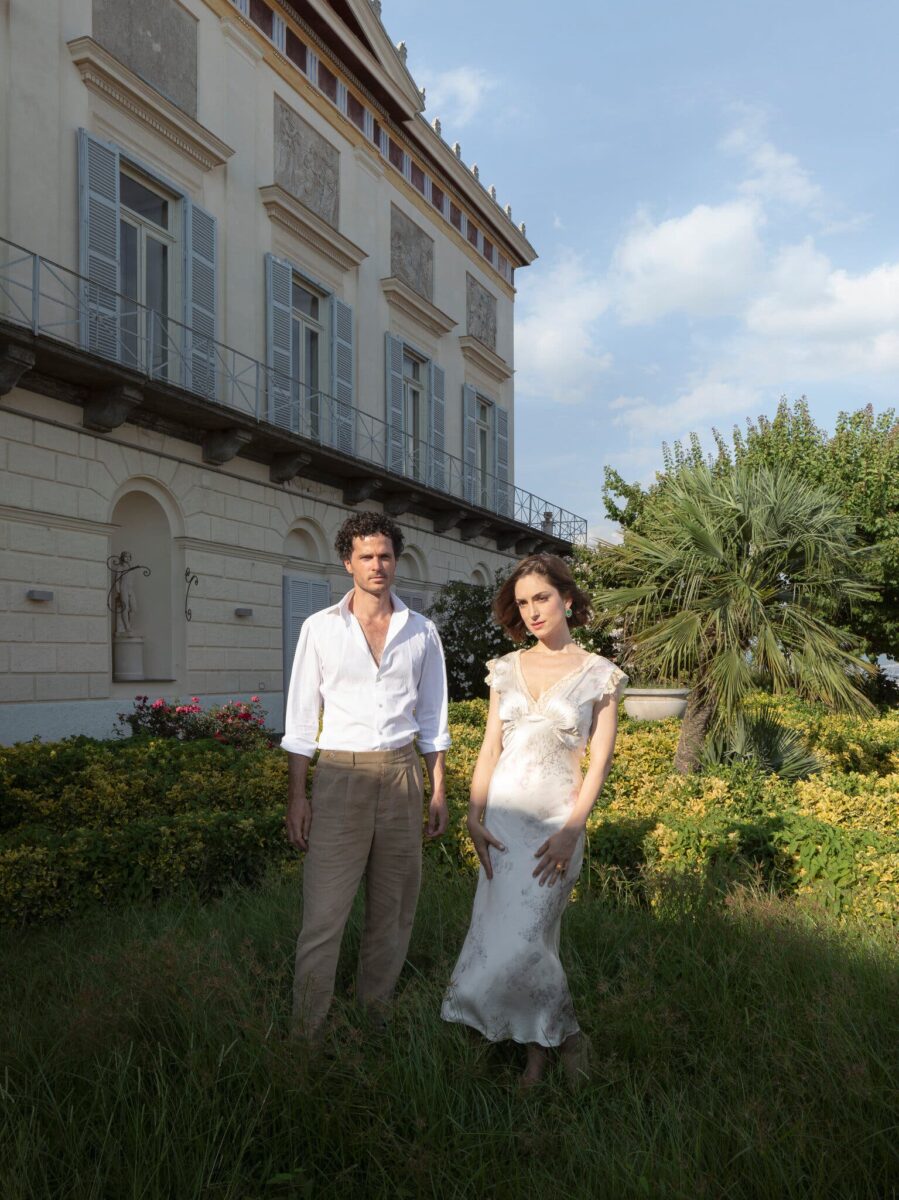
Source of article and photos: New York Times Magazine

